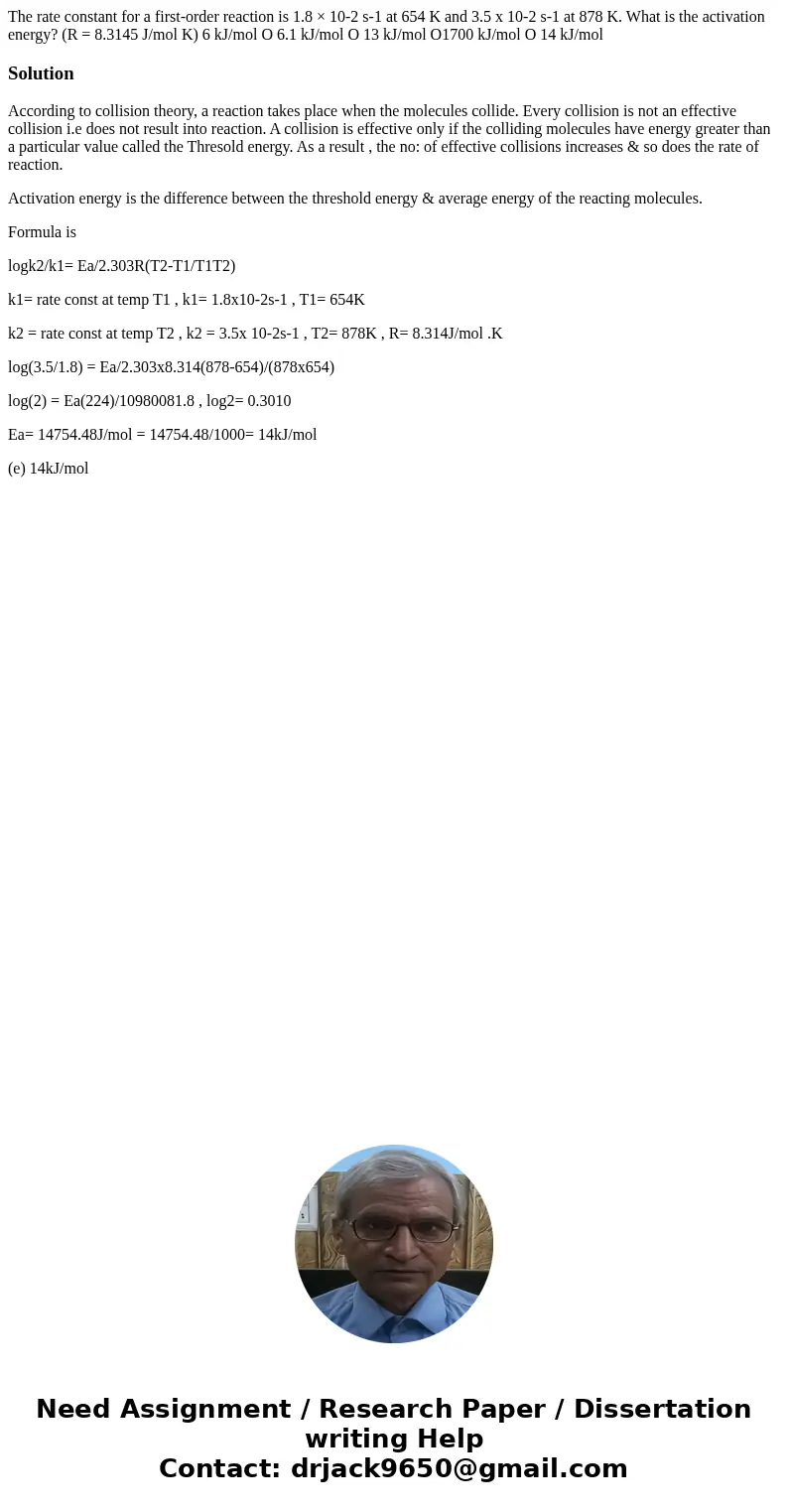The rate constant for a firstorder reaction is 18 102 s1 at
Solution
According to collision theory, a reaction takes place when the molecules collide. Every collision is not an effective collision i.e does not result into reaction. A collision is effective only if the colliding molecules have energy greater than a particular value called the Thresold energy. As a result , the no: of effective collisions increases & so does the rate of reaction.
Activation energy is the difference between the threshold energy & average energy of the reacting molecules.
Formula is
logk2/k1= Ea/2.303R(T2-T1/T1T2)
k1= rate const at temp T1 , k1= 1.8x10-2s-1 , T1= 654K
k2 = rate const at temp T2 , k2 = 3.5x 10-2s-1 , T2= 878K , R= 8.314J/mol .K
log(3.5/1.8) = Ea/2.303x8.314(878-654)/(878x654)
log(2) = Ea(224)/10980081.8 , log2= 0.3010
Ea= 14754.48J/mol = 14754.48/1000= 14kJ/mol
(e) 14kJ/mol

 Homework Sourse
Homework Sourse